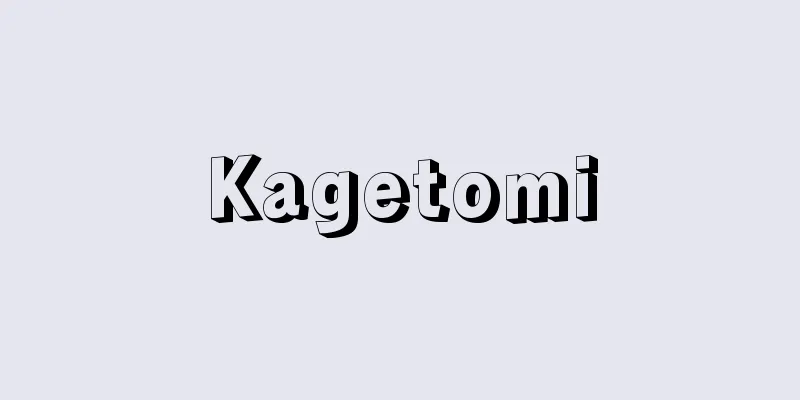Funny song - Gishoka

|
…The name originates from the section on humorous poems in Volume 19 of the Kokinshu, which contains 58 poems, but it comes from a term used in Chinese poetry. Humorous poems were already found in Volume 16 of the Manyoshu, such as "Humorous Songs" and "Laughing Songs," and this poem belongs to that genre. In the Kokinshu, the poem "We came to view the plum blossoms, and the nightingale, singing "One by one, I am disgusted" depicts a third person arriving when a plum blossom (female) and a nightingale (male) are meeting, and the nightingale sings "Hitotoku, hitoku" to express its disgust. The poem "I asked who the owner of the golden yellow clothes was, but he didn't answer, because he was silent and the gardenia-colored clothes" is based on the interest of a hanging word. *Some of the terminology explanations that refer to "Gishoka" are listed below. Source | Heibonsha World Encyclopedia 2nd Edition | Information |
|
…《古今集》巻十九に〈誹諧歌〉の部立(ぶだて)があって58首を収めるのが名称の始まりであるが,中国の詩に用いられた用語に由来する。滑稽な歌はすでに《万葉集》巻十六にも戯笑歌,嗤笑歌(ししようか)などがあり,その系統に属する歌である。《古今集》の〈梅の花見にこそ来つれ鶯のひとくひとくと厭(いと)ひしも居る〉は梅の花(女)と鶯(男)とが会っているところへ第三者がやってきたのを鶯が〈人来(ひとく)人来(ひとく)〉と鳴いて厭うという趣向であり,〈山吹の花色衣主(ぬし)や誰問へど答へずくちなしにして〉は山吹色の衣の持主を問うが答えない,クチナシ色(黄色)の口無しなので,と懸詞(かけことば)の興味を骨子としたものである。… ※「戯笑歌」について言及している用語解説の一部を掲載しています。 出典|株式会社平凡社世界大百科事典 第2版について | 情報 |
<<: Weather Resistance Breeding Project
Recommend
Li Zhan - Rizen
1686‐1762 Chinese painter of the mid-Qing dynasty....
Nishiizu [town] - Nishiizu
A town on the west coast of the Izu Peninsula in K...
Gunnarsson, Gunnar
Born: May 18, 1889, Hryotsdalur [Died] November 21...
Dracontius
…The last secular poet was probably Corippus in t...
Ando Rensho
He was a vassal of Tokuso who was active in the we...
Public utilities
An industry that provides services essential to t...
American structural linguistics
…E. Sapir, who studied American Indian languages ...
collector
…These agents are collectively called flotation r...
Avant-garde (English spelling)
In general, it refers to an innovative artistic mo...
Berlichingen - Götz von Berlichingen
A knight during the German Reformation. Born in J...
Curtin, J.
...Apart from small-scale air raids, the Japanese...
Whale Dance - Kujiraodori
...A bamboo about 30cm long is wrapped with color...
Ezo
In ancient Japanese history, the term refers to p...
Order to buy rice - Okaimai Rei
...The reasons for issuing the edicts were varied...
International Electrotechnical Commission
…The number of ISO standards had reached approxim...

![Kiyosato [Village] - Kiyosato](/upload/images/67cb5f576eebe.webp)





![Ayanan [town] - Ryonan](/upload/images/67cd2cc6bb6e3.webp)

